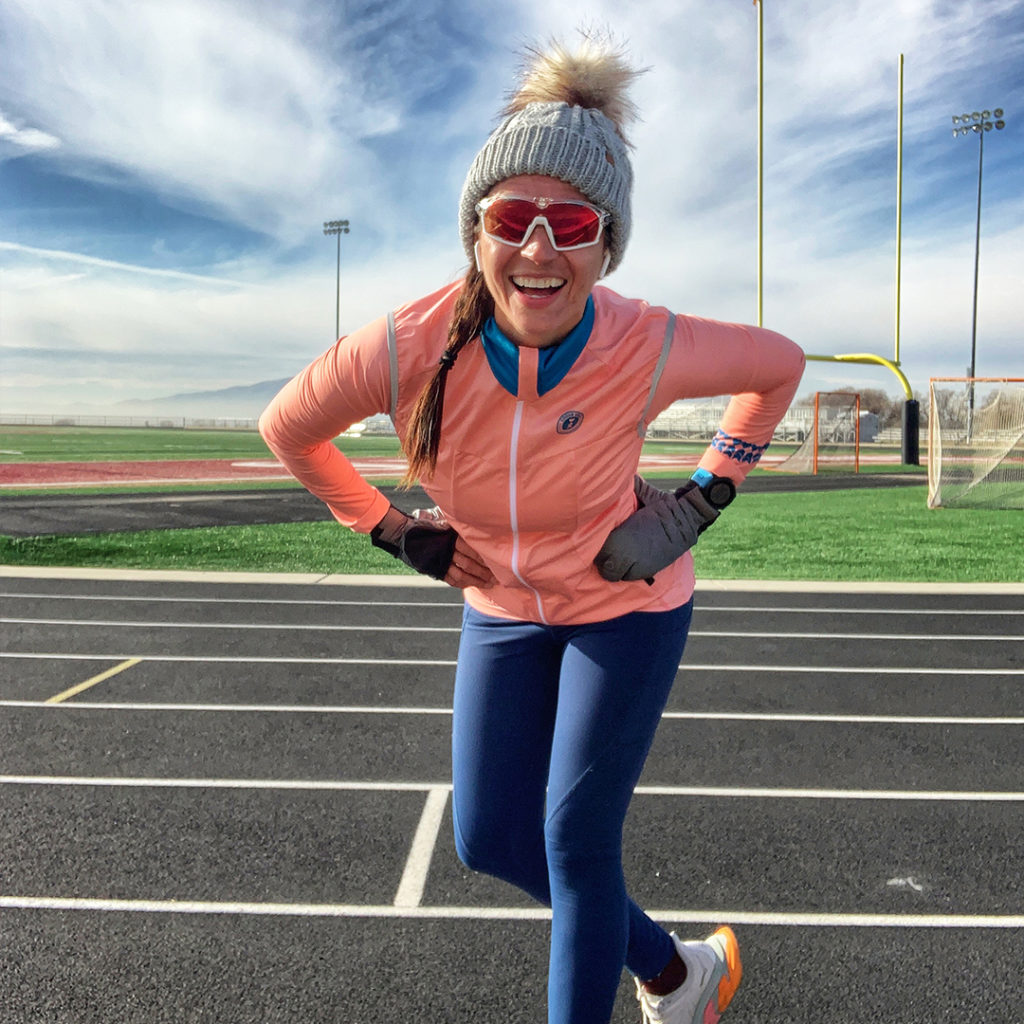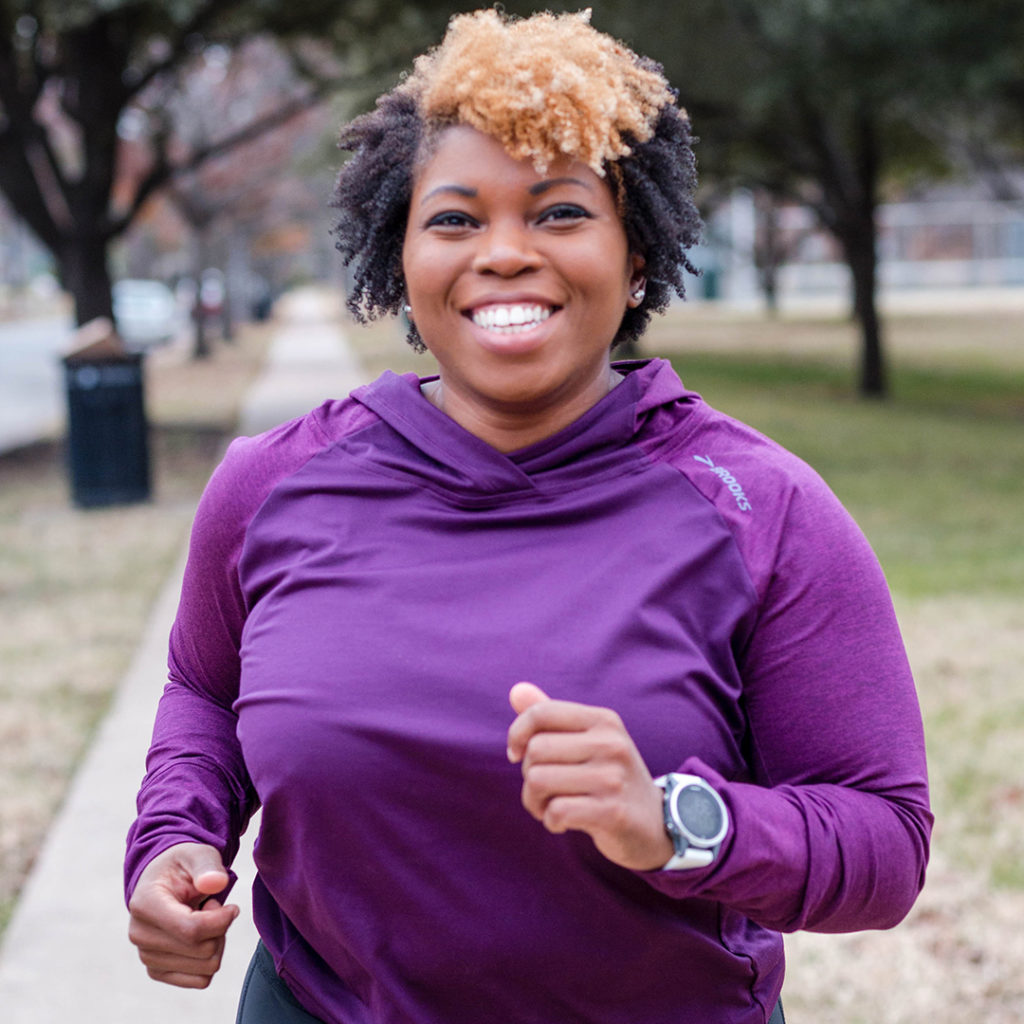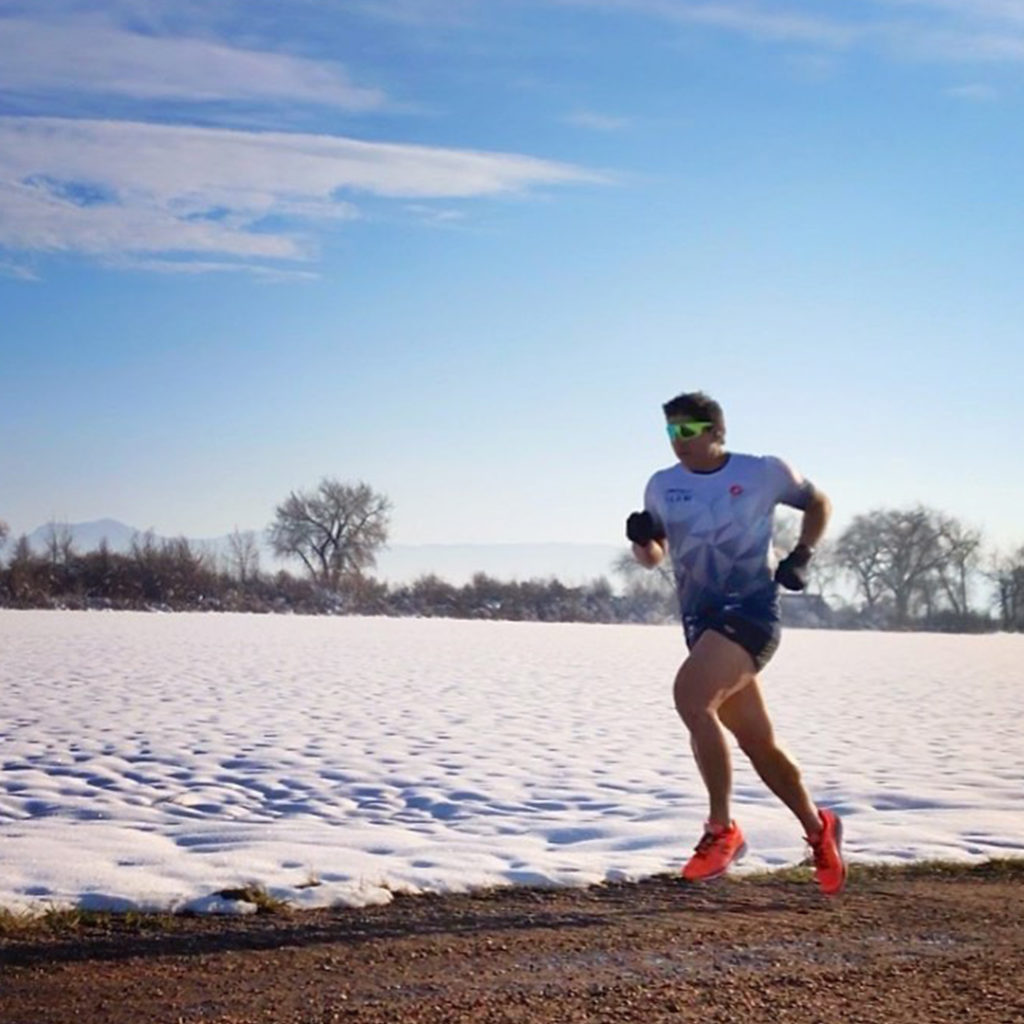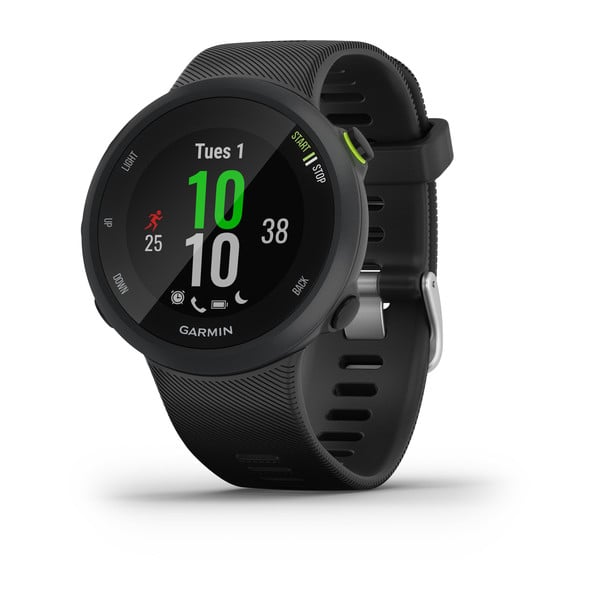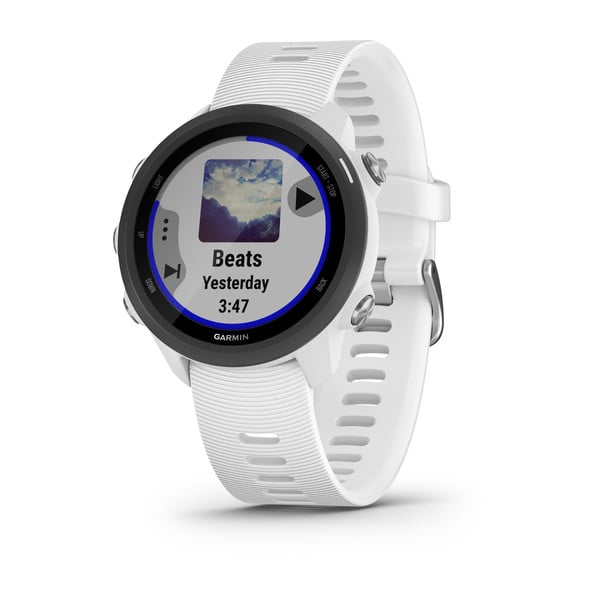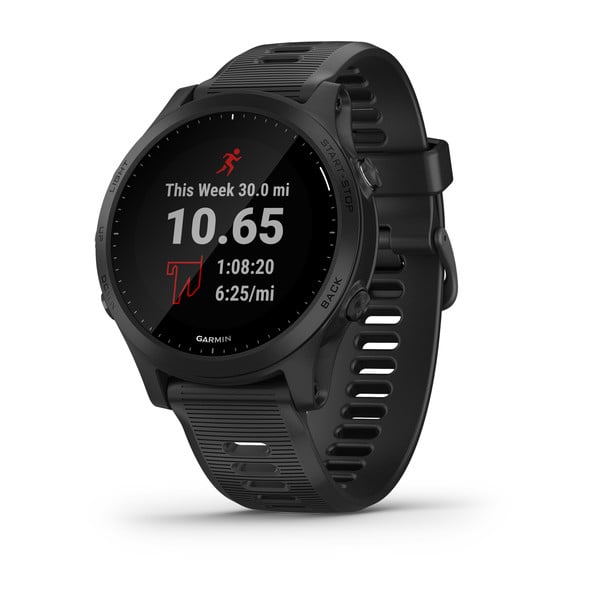
Winter Training: Indoor or Outdoor?
Here at Garmin, it’s a regular debate every winter: Do you train outdoors or inside? Do you think one is more beneficial than the other?
A lot of outdoor runners would say it’s better to tough it out and train in the cold. They argue that it strengthens your immune system and provides vitamin D and fresh air. But even the bravest of winter warriors know the risks: The winter brings a greater chance of injury, bad weather and less light. With treadmills and even indoor tracks, why bother running outdoors? We reached out to some of our Garmin ambassadors, two outdoor runners and two indoor runners, to ask them about their winter training. Here’s what they had to say:
OUTDOOR RUNNER
Jeph Maags, Ontario, Canada (@jeph.runs.wincity)
Why do you prefer to train outdoors in the winter?
LIBBY: I love the crisp air on a winter run. As long as I wear the right gear, winter just makes my body feel more alert and awake. Not to mention while running, my muscles hurt less in the winter — and that’s always a good thing, right?
JEPH: I love the feeling of the cool air. I overheat really easily when I run. In the cold, there’s always the right gear you can put on to keep yourself warm when the air gets a little too cold. The cold air doesn’t suck the energy out of you like the heat does. In the heat, there’s only so much you can take off and it can still drain you.
What does your winter training regimen look like?
LIBBY: Winter training for me means that my runs are shorter and stay at easier paces. While it is true that there are advantages to running in cold temperatures — your heart rate stays lower since it works less at pumping blood to your muscles and hence doesn’t have to work as hard to keep you cool — the very frigid temperatures can also make your breathing a little harder so your efforts feel harder. Running shorter distances allows for the body to recover better and feel great for the next cold run.
JEPH: I usually train for an early spring marathon, so I get a lot of long, cold workouts in. I’ll be outside as much as I can be. If snow and ice make the roadways and pathways too hazardous to do a workout on, I try and hit the treadmill at the gym to make it work. Any easy runs, those will be done outside up to -30 degrees Celsius.
What do you wear to stay warm on a run? Are gloves important?
LIBBY: I wear appropriate layering and materials that are both warm but breathable. Moisture-wicking garments are important so you don’t get that horrible “sweaty-cold” feeling and then be shivering the entire day. And yes, gloves are very important. I like to wear specific running gloves that are lightweight. But also prefer mittens over regular gloves so the isolated fingers don’t get numb.
JEPH: The biggest thing to consider is always the wind. Sometimes I can get away with a couple long sleeves. Other times, I want something that will break the wind. For my head, I can usually get away with a buff that will cover my ears. If we drop below -10 degrees Celsius, then I might pop on a toque. Gloves are pretty necessary for me. Again, the wind can make my hands pretty cold, pretty quick. I have gloves that have a mitten windbreaker on them. I pop on the built-on mitten cover to block the wind and slide my thumbs in there as well. Keeping the fingers together like that warms them up for me.
How does winter impact your diet and water intake?
LIBBY: It’s so important to not neglect your hydration during cold temperatures. We may not feel thirsty at all, but our muscles are still working hard, so we need to replenish them both while running and after the run. Nobody likes to be woken up (violently) with a horrible cramp because of dehydration. Ouch.
JEPH: I tend to drink less during my workouts in the winter. This is one of those do as I say, not as I do scenarios. I’m not losing as many electrolytes through sweat, but it’s still important to stay hydrated. I do a lot to try and stay on top of that before and after my runs. But handhelds tend to freeze in the winter here, so it’s hard to drink if the run gets too long.
What advice do you have for people wanting to train in winter?
LIBBY: My advice is to embrace the peace and beauty of winter. And to always go prepared. Take into consideration the range in temperatures and the actual “feel” (this includes the wind chill) rather than just relying on the weather prediction. Wearing the right gear, both breathable, comfortable and lightweight, is key for a pleasant run. This applies to even really cold days (like low 20s and even the teens) — a good pair of gloves and a headband or a beanie can save the day. And before you know it, you’ll be like me, loving those crisp and beautiful morning runs!
JEPH: Overdress and go for it. When I first started running in the winter, I went to my running store and asked for all the warmest running gear they had. Half of it I don’t wear anymore. It’s better to be too warm than too cold. So you kind of learn as you go what works for you. Everyone has different cold thresholds — when to go from shorts to pants, when to go from long sleeves to jackets. I say, err on the side of being too warm and learn how much you really need. The biggest factor to take into account is the wind! It can be -10 and no wind, and it doesn’t feel too bad. It can be -3 and feel like -10 because of the wind, and it’ll feel absolutely miserable. Keep an eye on the wind.
INDOOR RUNNER
Conrad Rodas, Boulder, CO (@conradrodas)
Why do you prefer to train indoors over outdoors in the winter?
CONRAD: Winter in Colorado can be unpredictable with snow and ice. Also the days are very short, so if I intend to train early, I’d rather get it done indoors. This keeps me safe and also the prep time is a lot shorter. If I do go outside, I end up having to put on many layers.
ALEXANDRIA: During the pandemic, I’ve learned to embrace training indoors. No matter the weather or time, I know I can quickly train no matter the circumstances. Training indoors allows my body to handle the strain of my workouts with less risk of injury.
What does your winter training regimen look like?
CONRAD: Winter training is more of base training. I try to keep it easy, and I mix it up a lot. I cross train a lot— snowboarding, splitboarding, hiking — things that I can’t do in the summer.
ALEXANDRIA: Since winter typically is the end of my marathon season, I use the winter season to work on recovery and weight training. This allows me to reflect upon the previous running season, rest and build upon previously broken areas.
Aside from running, what other kinds of training do you do?
CONRAD: I swim, bike and strength train for triathlons, but as mentioned on the previous question, I try to cross train as much as I can.
ALEXANDRIA: I do a lot more HIIT interval training, indoor cycling and other areas that need improvements, such as strength training and core. I also incorporate various exercises such as breathwork and yoga plans within Garmin Connect™.
How does winter impact your diet and water intake?
CONRAD: In winter I am a lot less thirsty, but it’s obvious as I sweat a lot less also. I still try to hydrate as much as I can; I do drink a lot more hot tea in the winter though.
ALEXANDRIA: Because I am a native Texan and now live in Maryland, winter is much harder for me due to the holidays, weather and an increase of staying indoors. My diet tends to suffer a lot more; thus, I rely on prepared or hearty meals rich in nutrients but quick to make. My water intake is better because I don’t have to hydrate like in the summer months.
5. What advice do you have for people wanting to train in winter?
CONRAD: Keep it fun and fresh, and do not force it. As soon as you start to dread training, it will have a much worse impact on your training. Winter is all about doing different things (other than training for your event). Enjoy the time and trying new things.
ALEXANDRIA: When training indoors, I suggest creating a workout room or area so that you can easily roll out of bed and feel like you are at the gym. Make sure you are continually cleaning and have proper ventilation. I recommend having a good air filter in the room you’re working out in and keep sanitizing wipes and a towel with you. If possible, balance some workouts indoors with outdoors so that you can become balanced in your training and prepared mentally for seasonal training.
Follow @GarminFitness on Instagram for more tips, trick and insights on winter training.
